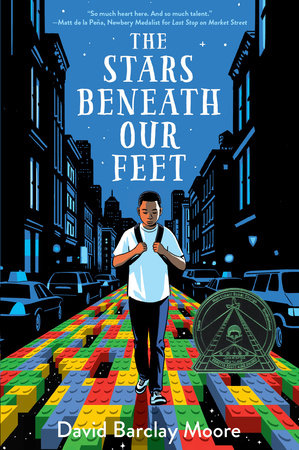Children’s lives may seem like battle zones to them, even if those lives don’t always seem as perilous to us as adults. The world is hard to navigate as a kid. They don’t get much freedom to make their own choices, and yet they possess a growing awareness of the troubles of the world. And the social dramas of middle school can be treacherous.
On the opposite side of this coin, many of our children really do live in environments akin to war. More research needs to be done to examine the effects of poverty, drug abuse, gang warfare, and violence on the children inundated by all of this suffering.
Though born and raised in Missouri, I lived in Harlem in New York for years. I worked with children and families at the poverty line at Harlem Children’s Zone. During that time, Langston Hughes’s short yet powerful poem “Harlem” was never far from my mind. How many of us know its poignant line about a raisin in the sun, which playwright Lorraine Hansberry later used as the title of her play?
It’s the poem’s warning of what happens to a dream deferred, though, that has always resonated most powerfully for me: Does it sag “… like a heavy load. / Or does it explode?” The lives of some of our children can be little explosions waiting to happen. How can we help? How can we aid them in dismantling these charges before they burst?
Giving kids creative outlets can make a huge difference.
In my novel, The Stars Beneath Our Feet, my 12-year-old protagonist, Lolly Rachpaul, navigates a sea of societal challenges in contemporary Harlem, including the murder of his beloved brother and peer pressure to join a local crew or gang. Being in a gang is what got Lolly’s brother killed.
There is another choice. Lolly is a maker, or builder. He builds with LEGOs. Building helps him weather the effects of the battle zone around him.
These challenging elements of his life inflict real damage. Building, making LEGO art, has the ability to heal.
The idea of art as therapy is not a new one. Aristotle believed it was the viewers of art who benefited from its cathartic effects. But we now know that the act of making art can change the maker, or artist, on a physiological level. The process can alter brain waves, soothe, relax, inspire, and provoke new ways of thinking. It can influence our relationship to our world.
Art is human. Art is universal.
In my character Lolly’s case, building LEGO cities gives him a creative outlet. His imagination is brought fully to bear, and he eventually begins to see his world through different eyes as a result. He can imagine options that were hidden before.
It’s a process initiated by art, which can be of value to any child who is enduring troubles, no matter how great or small. Problems don’t need to be extraordinary to encourage the use of art as a healer.
Children sometimes lack the complicated language to explain why they are hurting. Stories, colors, shapes, paints, clay, puppets, and building blocks can often take its place and make expression simpler. Learning to journal or keep a diary can also be valuable for older children who can have more complex ideas and emotions.
My central character learns, throughout the course of The Stars Beneath Our Feet, to dismantle his own bombs. But Lolly also finds, like we all must, that the process of living is never truly finished until it’s finished. Fresh struggles emerge. Giving kids the time and the space to express themselves can help them find their way.
-
Also From the Author


